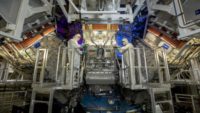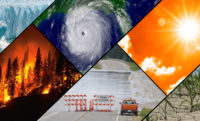California structural engineer H. Kit Miyamoto and members of his non-profit seismic safety engineering and disaster response organization, Miyamoto Global Disaster Relief, have been in Nepal since just after the quake struck. The team includes Manis Rajibhandari, a structural engineer who ran a 30-person firm in Katmandu that was one of the country's largest, he says.
"The risk of large aftershocks is real. If the epicenter is closer, there will be even more damage, but what we are seeing now is that the mountain villages were very heavily damaged. In some places, the villages are reporting that all houses collapsed.
Miyamoto, CEO of design firm Miyamoto International, launched the response unit after seeing too many missed opportunities to improve the seismic resilience of existing structures, especially schools, which led to unnecessary death and destruction in seismic events. The non-profit, of which he is president, now works with cities around the world in quake-prone areas to develop programs to harden critical structures and improve seismic engineering codes in general.
"The risk of large aftershocks is real. If the epicenter is closer, there will be even more damage, but what we are seeing now is that the mountain villages were very heavily damaged," Miyomoto told ENR. "In some places, the villages are reporting that all houses collapsed."
He adds that "Since the mountain villages are so isolated, aid to them has been slow. There are ways to recover and reconstruct effectively, but the world needs to act fast. Many of damaged houses can be repaired and strengthened. Monsoon season is around the corner and winter is severe."
“They have been pushing for a seismic resilience program in Katmandu and Nepal for quite a while, with support of USAID and the World Bank,” Miyamoto says. " I saw ductile details in some of the poor urban neighborhoods I visited. One of the local engineering colleges conducted public shake table tests in the early 2000s to show people the value of better construction and retrofitting, But they have not done any real projects, like Istanbul.”
“But this definitely will change things—and it’s never too late, because they are still going to have more earthquakes to come,” says Miyamoto, who has partnered with various UN, US government and local entities “With this kind of disaster it can be very highly technical stuff. U.N. agencies don’t have this kind of expertise. Our plan is to remain here until it gets built back, just as we did and are doing in Haiti and New Zealand. ”
His team took everything it needs—besides water—to be self-sustainable “so I don’t become part of the disaster,” he says. In the long run he expects the group to be “pretty heavily” involved, initially in conducting assessments of still-standing structures to determine if they are safe enough to reoccupy. “It’s a really prolonged effort,” he says. Creating effective pre-disaster resiliency programs is “almost a mission impossible,” he adds. “It’s just not going to happen, no matter how much money a place has or what the culture is because people can’t get past the 'it’s not going to happen to me' mentality.”
Miyamoto suggests that efforts to get public funding for seismic resilience programs also may be more effective if directed to motivating private-sector businesses. “Once business realizes what’s at stake, things start to happen,” he says. "It’s always going to be after the fact, like in Haiti, but at least then there is a sense of urgency now that something—maybe a disaster-risk reduction program—has to be done.
Andreas Stavridis, a University at Buffalo civil-structural engineering professor and specialist in masonry structures, is in discussions with colleagues from Oregon State University and Rome’s Sapienza University about a possible trip to Nepal this summer to study the behavior of these structures to see why some failed and others did not. He says they make up about 60% of the buildings in Nepal where the earthquake hit. Roughly 25% are concrete frames infilled with masonry panels, he said.
“We want to see what works and what doesn’t work in terms of preventing damage and destruction,” he said. “There is only so much you can simulate.” Stavridis’ group may seek funding from the National Science Foundation for the research trip.
The American Society of Civil Engineers has 60 members living in Nepal and is monitoring quake reports, but a spokeswoman says the group has no current plans to dispatch an engineering team to the area.
US Engineering Students' Nepal Wind Turbine Project Survives
A wind turbine created by the Hartford High School’s Academy of Engineering and Green Technology is still up and running in Saldang, Nepal, about 180 miles northwest of Katmandu, following the earthquake.
Connecticut philanthropist Peter Werth received confirmation of the turbine’s durability. “I got word from Saldang that our tower is still standing! She is not only storm proof but earthquake proof too! The place shook a bit but all is good!”
The Hartford students are currently building similar power systems for Karang and Namdo, Nepalese villages that were also spared from the destruction of the earthquake. The students have banded together to send additional aid to Nepal through AmeriCares, a Connecticut-based global disaster charity with a team there.
Additionally, the students are sending ponchos and medicine to children in need, which will be delivered by Werth upon his visit to the village later this month.







Post a comment to this article
Report Abusive Comment